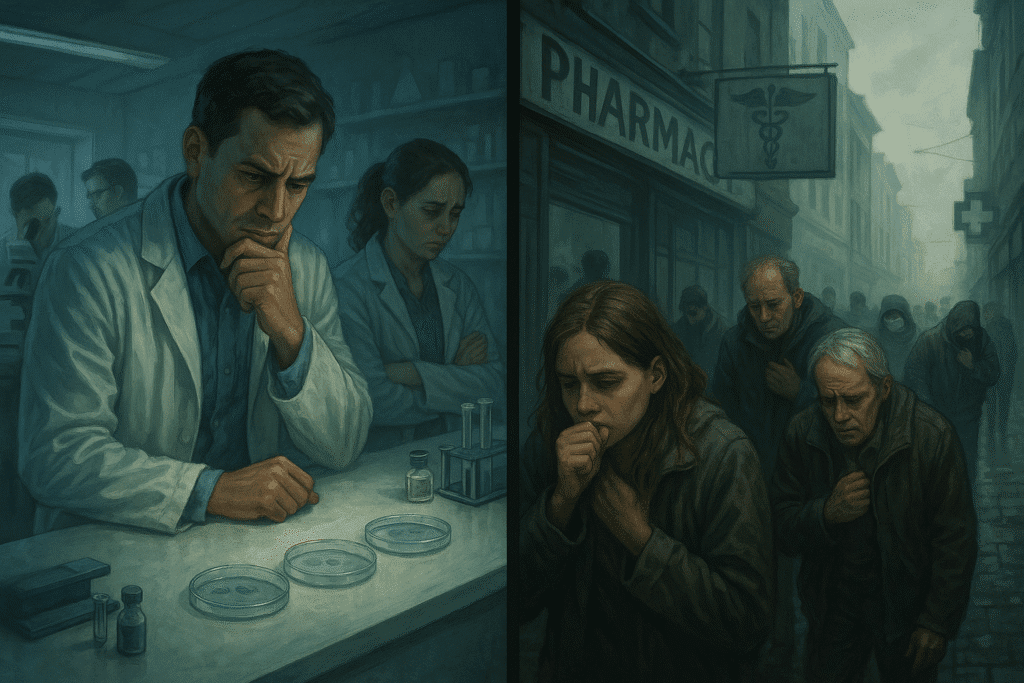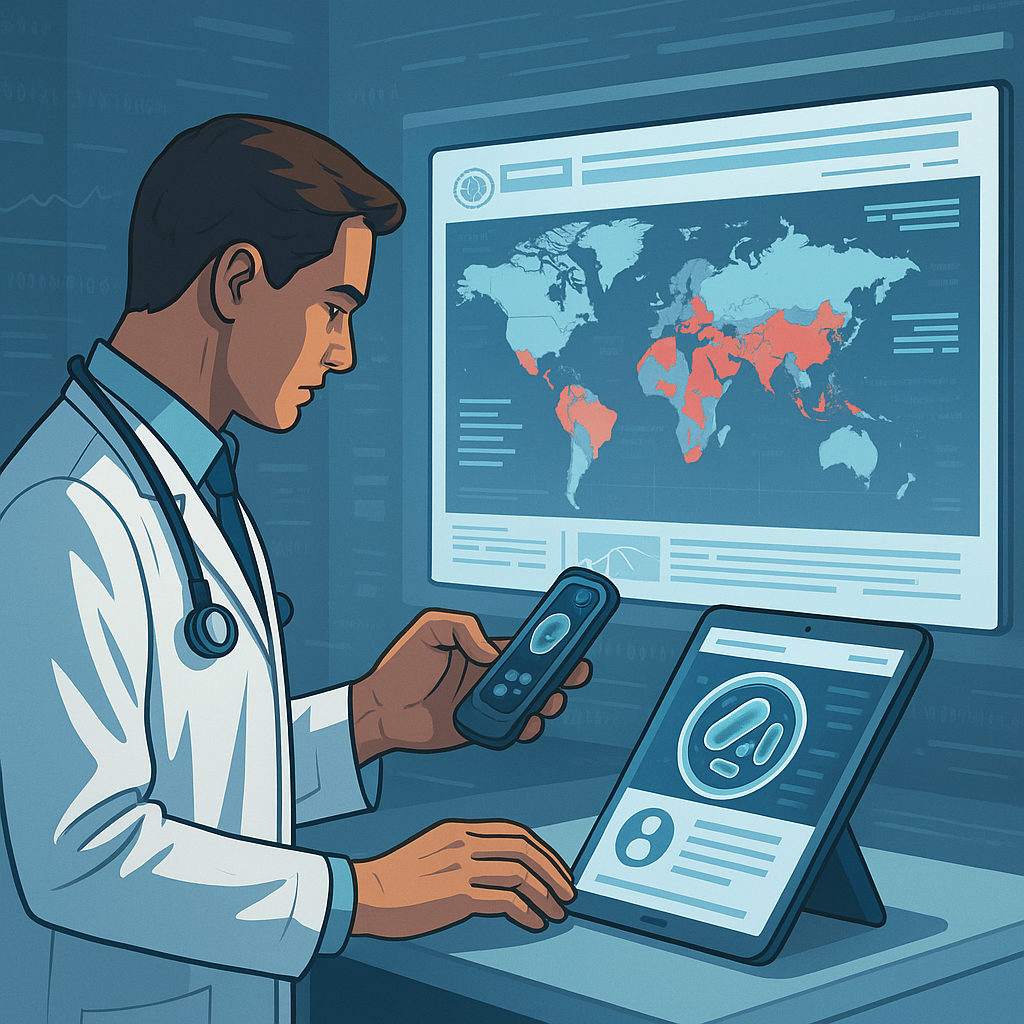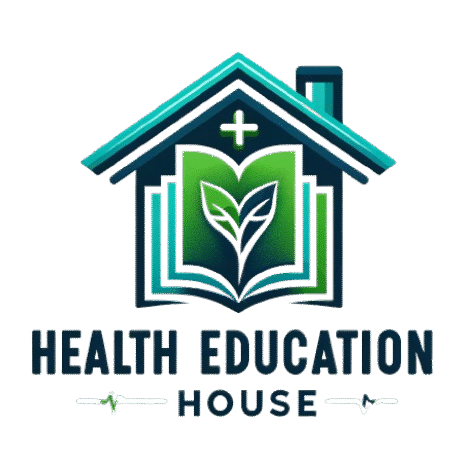The Infections That No Longer Die
Six years old Nira scraped her knee running outside her school in Chitwan. The wound didn’t look serious. Her mother cleaned it, put ointment, and bandaged it up like any parent would.
But within days, the skin turned red and swollen. Fever came next. Then the hospital. And by the end of that week, Nira was on her fourth antibiotic , none of which were working. The doctors told her parents what no one ever wants to hear.
“We’re running out of options.”This wasn’t a rare disease. This was a common antimicrobial resistance infection that had stopped responding to treatment. The bacteria didn’t care that Nira was a child. It didn’t care that it was supposed to die. It had already evolved past the drugs meant to kill it.

This is What Antimicrobial Resistance Looks Like
You may not know the term antimicrobial resistance, or AMR but you’re living in its shadow every time you take an antibiotic, drink untreated water, or eat meat raised on a farm.
AMR happens when bacteria, viruses, or parasites learn to survive the medicines we throw at them. The more we misuse these drugs, the faster the microbes adapt. They get smarter. Stronger. And our last lines of defense? They begin to fail.
In 2019, AMR was responsible for over 1.27 million deaths and linked to nearly five million. That’s not some worst case scenario. That’s what already happened.
And according to global forecasts, by 2050, 10 million people could die each year from infections we can no longer treat.
That’s more than cancer. More than diabetes. More than war.
We Created This Problem, One Prescription at a Time
How did we get here? Slowly. Carelessly
For decades, antibiotics have been handed out for everything colds, fevers, even headaches. Most of the time, the illness was viral, which means the antibiotics were never going to help. But they were prescribed anyway sometimes just to make the patient feel heard.
Other times, it’s the patient pushing for them, insisting they “just need something strong.” We’ve all done it, not knowing that every unnecessary pill we swallow makes the next infection harder to treat not just for us, but for everyone.
In many parts of the world, antibiotics are sold without prescriptions. In others, leftover tablets are shared among family or friends. And in farms, animals are fed antibiotics routinely not because they’re sick, but because it fattens them up faster. That resistance doesn’t stay on the farm. It enters our food, our soil, our water. And then it enters us.
This isn’t Just a Medical Problem
We like to believe science will always have a solution. That new medicines will be discovered before the old ones fail completely. But that’s not what’s happening.
Most new antibiotics in the pipeline are just tweaks of older ones. In fact, out of dozens in development, only a handful target the bacteria we’re actually losing to. Why? Because antibiotics don’t make money. They’re used for short periods, and ideally not at all. There’s no profit in making a drug you want people to use as little as possible.

So while bacteria keep evolving, our tools stay mostly the same duller, slower, and less effective with every use.
The World is Responding, But Slowly
The World Health Organization launched its Global Action Plan in 2015, urging countries to improve how they prescribe, monitor, and control antimicrobial use. Some, like Nepal, have taken serious steps.
Nepal’s National Action Plan (2024–2028) focuses on banning over-the-counter antibiotic sales, raising awareness in rural communities, and improving surveillance. It’s also part of the global One Health movement a strategy that treats human health, animal health, and the environment as inseparable parts of the same fight.
It’s a good start. But policy is one thing. Practice is another.
You can write laws. But how do you stop a village clinic from handing out antibiotics like candy when there’s no pharmacist nearby? How do you convince a parent not to share leftover meds when they can’t afford another doctor visit?
You don’t fix this with a poster campaign.
What Happens When Nothing Works?
People imagine drug resistance as something futuristic. But the future is here.
Imagine going in for surgery, and the doctors can’t guarantee you’ll survive the recovery because of infection risk. Imagine giving birth, and developing a postpartum infection they can’t control. Imagine your child getting a sore throat that turns fatal because the bacteria in her body have seen every drug you can throw at them and outsmarted them all. This isn’t theoretical. This is happening already in hospitals from Kathmandu to London. Even simple dental procedures are starting to come with warnings.
We are standing on the edge of a medical era we thought we left behind.
So What’s the Game Plan?
Fighting AMR requires more than a few policy changes. It’s going to take deep, structural shifts in how we use medicine, manage healthcare, and even raise our food.
The first and most urgent strategy is antimicrobial stewardship. That means prescribing antibiotics only when truly necessary not just “to be safe.” WHO’s AWaRe model is part of this effort. In countries like Nepal, it also means training PHC (Primary Health Care) doctors, who often prescribe the first dose of antibiotics people ever take.
Surveillance and diagnostics are the next big pieces. Systems like WHO’s GLASS (Global Antimicrobial Resistance and Use Surveillance System) are helping countries monitor resistance trends. But equally important is making diagnostics faster and more accessible, so doctors know what they’re dealing with before prescribing anything.

Then there’s education. Awareness campaigns especially during AMR Awareness Week can work, but only if they reach the right audiences. Farmers, medical students, pharmacists, and everyday patients all need to be part of the conversation. Everyone who touches antibiotics literally or metaphorically needs to understand the consequences of misuse.
Another critical front is sanitation and infection control. In regions affected by poverty, war, or displacement, even the best drug policies fall apart without basic hygiene infrastructure. If people don’t have clean water, they’ll get sick more often, and antibiotics will get used more fueling the resistance cycle.
One of the toughest areas to reform is agriculture. Non-therapeutic antibiotic use meaning drugs given to animals that aren’t even sick has been standard practice for decades. It has to stop. Countries like Nepal are beginning to introduce regulations around this, but enforcement and education are key.
Finally, the world needs new medicines. As of WHO’s 2024 analysis, only 6 out of 27 antibiotics in the global pipeline are truly innovative. The rest are just tweaks on old drugs. And few of them target the most dangerous bacteria. That’s why research and development not just of new antibiotics, but of next-gen alternatives like phages, CRISPR therapies, and bacteriocins is vital. Initiatives like CARB-X are already funding early-stage drug development, but it’s a race against time.
This Fight Needs Everyone
You don’t need a degree in microbiology to be part of the solution. You just need to stop treating antibiotics like harmless little pills.
Ask your doctor if you really need that prescription. Don’t skip doses. Don’t hoard leftovers. Don’t demand antibiotics just because you’re uncomfortable and don’t take them unless you absolutely have to.
If you’re a farmer, reconsider routine antibiotics in feed. If you work in policy, stop dragging your feet. If you’re in medicine, resist pressure to overprescribe. And if you’re just a human being be one that doesn’t look away. Because if we don’t deal with this now, it won’t be a slow crisis. It’ll be a fast collapse.
And Here’s the Hard Truth
AMR isn’t a problem waiting in the future. It’s already taking lives. Silently. Every day.
Unlike pandemics, there won’t be breaking news or lockdowns. No government will ask you to stay home. Resistance doesn’t spread with the drama of a virus. It spreads quietly through hospitals, pharmacies, food chains, and water pipes. By the time most people realize something’s wrong, it’ll already be everywhere.
The world is not going to end with a bang. It might just end with an infection that should have been curable and isn’t.

 Medically reviewed by
Medically reviewed by